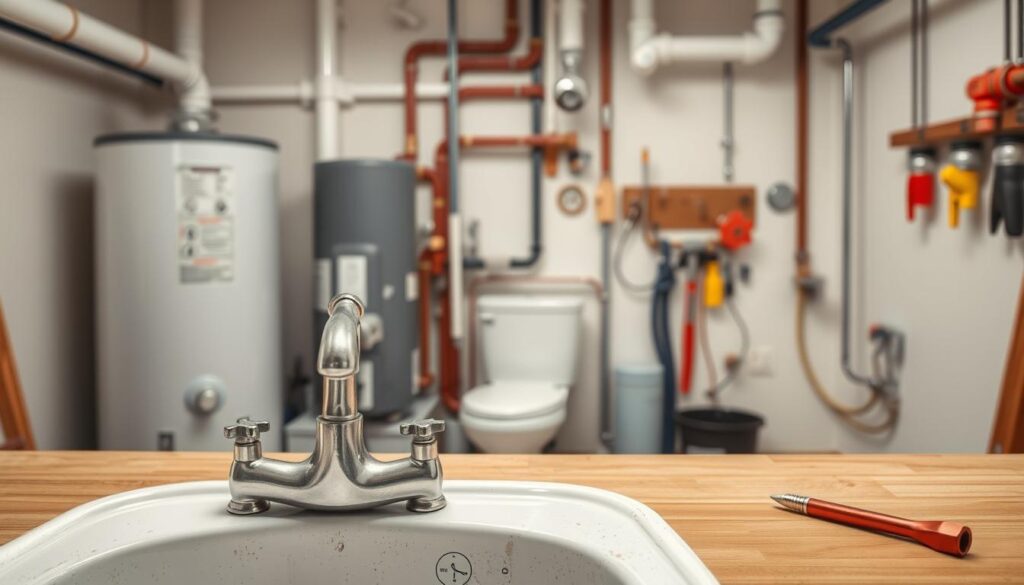As a homeowner, understanding your home’s plumbing system is crucial for routine maintenance, troubleshooting, and preventing costly damage. A leaky faucet or clogged drain can be more than just a nuisance; it can lead to water damage, mold growth, and increased utility bills.
Having basic plumbing knowledge can help you identify potential issues before they become major problems. By learning DIY plumbing tips, you can save money on repair costs and ensure your home’s plumbing system runs efficiently.
Key Takeaways
- Understand the importance of routine plumbing maintenance
- Learn to identify common plumbing issues
- Discover DIY plumbing tips for troubleshooting
- Know when to call a professional plumber
- Understand the benefits of basic plumbing knowledge for homeowners
Understanding the Basics of Plumbing Systems
For homeowners, grasping the basics of plumbing systems can help prevent common plumbing problems and ensure a safe living environment. A plumbing system is a complex network that supplies clean water, removes waste, and regulates air pressure within your home.
What is a Plumbing System?
A plumbing system consists of a network of pipes, fittings, valves, and fixtures that work together to supply clean water and remove wastewater. It is essential to understand that a plumbing system is not just about pipes; it’s a comprehensive system that requires regular maintenance to function correctly.
For more detailed information on plumbing systems and how to maintain them, you can visit McGill Plumbing’s guide for new homeowners.
Key Components of Plumbing
The key components of a plumbing system include:
Pipes, Fittings, Valves, Fixtures, Traps, Filters, Appliances
- Pipes: These are the conduits through which water flows. They can be made of various materials such as copper, PVC, or PEX.
- Fittings: These are used to connect pipes together, allowing for changes in direction or branching off into different lines.
- Valves: Valves control the flow of water throughout the system. They can be used to shut off water supply to specific areas or appliances.
- Fixtures: Fixtures are the endpoints of the plumbing system, such as sinks, toilets, and showers, where water is used or wastewater is collected.
- Traps: Traps are curved pipes under fixtures that hold water, preventing sewer gases from entering the home.
- Filters: Filters can be installed to purify water before it reaches fixtures, improving water quality.
- Appliances: Appliances such as water heaters and dishwashers are connected to the plumbing system and rely on it to function.
| Component | Function | Common Issues |
|---|---|---|
| Pipes | Carry water throughout the system | Leaks, corrosion, freezing |
| Fittings | Connect pipes, change direction | Leaks, improper sizing |
| Valves | Control water flow | Leaks, sticking, failure to shut off |
Understanding these components and their functions is crucial for maintaining a healthy plumbing system. Regular inspections and maintenance can help identify potential issues before they become major problems.
Essential Tools Every Homeowner Should Have
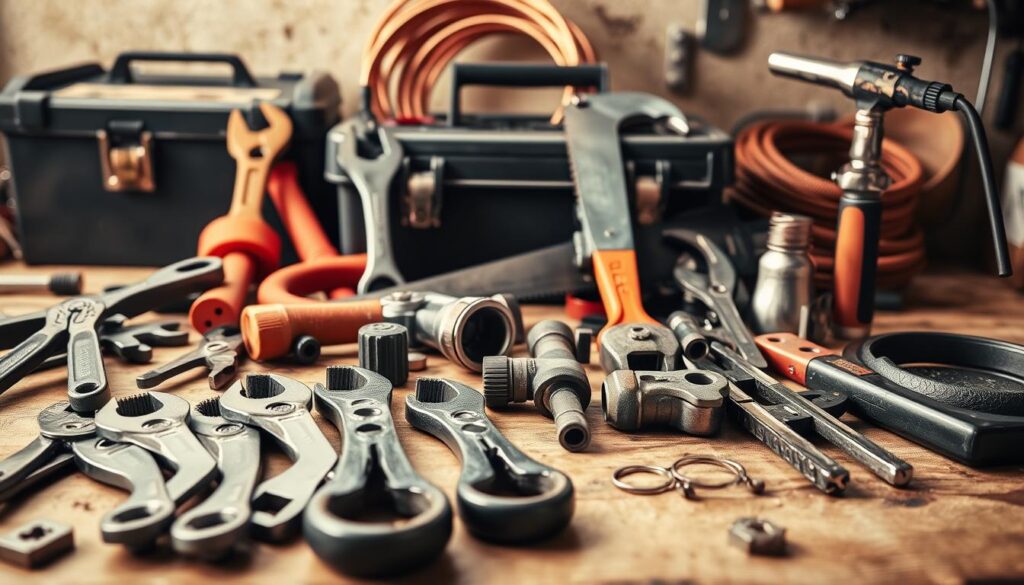
Having the right plumbing tools is crucial for every homeowner to tackle basic DIY repairs and maintenance. A well-equipped toolkit can help you address common plumbing issues before they become major problems. In this section, we’ll explore the essential tools that every homeowner should have in their plumbing toolkit.
Basic Plumbing Tool Kit Essentials
For beginners, it’s essential to start with the basics. A basic plumbing tool kit should include a variety of tools to help you tackle common tasks. Some of the must-have tools include:
- Adjustable Pipe Wrench: Useful for gripping and twisting pipes, this tool is a must-have for any plumbing task.
- Needle-Nose Pliers: Ideal for reaching into tight spaces and gripping small objects.
- Teflon Tape: Essential for creating a watertight seal on threaded pipe connections.
- Channel-Type Pliers: Useful for gripping and bending objects, these pliers are versatile and handy.
For more information on essential plumbing tools, you can visit Mr. Rooter’s blog, which provides a comprehensive guide on the tools every homeowner should have.
Advanced Tools for More Complex Tasks
Once you have the basics covered, you may want to consider investing in more advanced tools for complex plumbing tasks. Some of these tools include:
| Tool | Description |
|---|---|
| Pipe Snake | Used to clear clogs in drains and pipes. |
| Water Pressure Gauge | Helps measure water pressure in your plumbing system. |
| Tubing Cutter | Essential for cutting copper and other types of tubing. |
As noted by plumbing experts, “Having the right tools for the job can make all the difference in the success of your DIY plumbing projects.” (
Having the right tools is crucial for any DIY plumbing project. It not only makes the task easier but also helps prevent further damage to your plumbing system.
)
By investing in these essential and advanced tools, you’ll be well-prepared to handle common plumbing tasks and emergencies, ensuring that your plumbing system remains in good condition.
Common Plumbing Problems and Solutions
Common plumbing issues such as leaky faucets, running toilets, and clogged drains are not only inconvenient but can also lead to significant water waste and increased utility bills. Understanding how to diagnose and repair these problems can save homeowners a considerable amount of money and hassle in the long run.
Leaky Faucets: Diagnosis and Repair
A leaky faucet is one of the most common plumbing issues and can be quite frustrating. The first step in fixing a leaky faucet is to identify the source of the leak. Typically, leaks are caused by worn-out O-rings, gaskets, or valve seats. To fix the issue, you’ll need to turn off the water supply to the faucet and then disassemble it to replace the faulty parts.
For a more detailed guide on faucet repair, you can refer to resources like basic plumbing repairs every homeowner should. This can provide additional insights into the process and help you understand the tools required.
Running Toilets: Troubleshooting Techniques
A running toilet can waste a significant amount of water, leading to higher water bills. The most common cause of a running toilet is a faulty flapper or an improperly adjusted float. To troubleshoot, start by checking the flapper for any signs of wear or misalignment. Adjusting or replacing the flapper can often resolve the issue.
Additionally, inspecting the fill valve and adjusting the float arm can help ensure that the water level in the tank is set correctly, preventing continuous running.
Clogged Drains: Prevention and Remedies
Clogged drains are another common plumbing problem that can cause significant inconvenience. Prevention is key; being mindful of what you dispose of down the drain can help prevent clogs. Using a drain screen can catch hair and other debris before they go down the drain.
If you do encounter a clog, using a plunger or a drain snake can be effective remedies. For more stubborn clogs, a mixture of baking soda and vinegar followed by hot water can help dissolve the blockage. In severe cases, it may be necessary to call a professional plumber.
By understanding and addressing these common plumbing problems, homeowners can maintain their plumbing systems more effectively, saving time and money while also conserving water.
Safe Water Supply Management
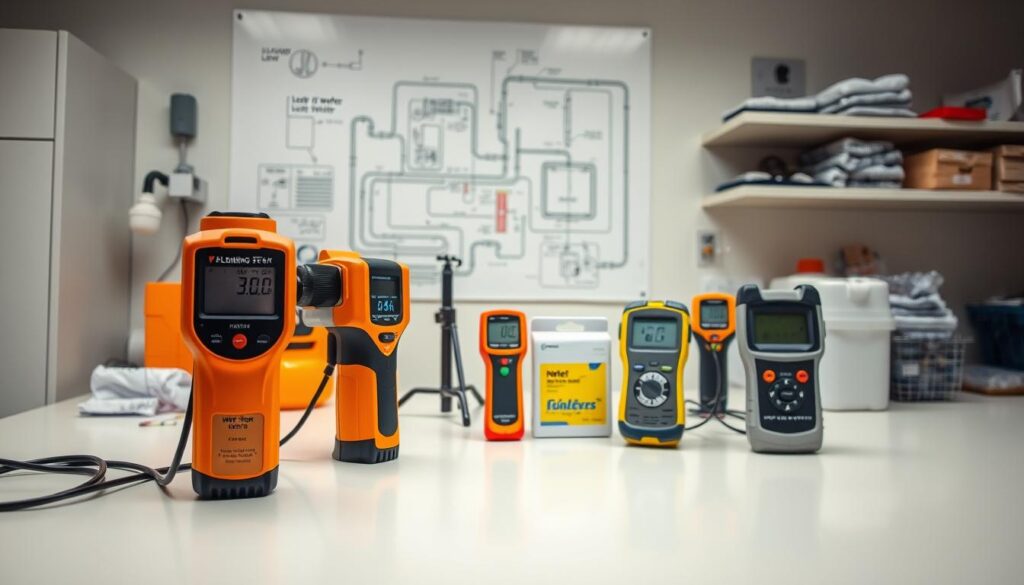
Safe water supply management is vital for maintaining a healthy and functional home. Proper management helps prevent plumbing emergencies that can lead to costly repairs and damage.
Understanding Water Pressure and Flow
Water pressure and flow are critical components of a well-functioning plumbing system. Water pressure refers to the force that drives water through the pipes, while water flow is the rate at which water moves through the system. Understanding these elements is essential for identifying potential issues before they become major problems.
For instance, high water pressure can lead to leaks and damage to your plumbing fixtures. On the other hand, low water pressure can indicate a problem with your water supply lines or municipal water supply. Checking your water pressure regularly can help you maintain an optimal level, typically between 30 and 80 psi.
| Water Pressure Level (psi) | Potential Issues | Recommended Action |
|---|---|---|
| Below 30 | Low water flow, potential for sediment buildup | Check for blockages or mineral buildup |
| 30-80 | Optimal for most household needs | Regularly check pressure to maintain this range |
| Above 80 | Risk of leaks, damage to fixtures | Consider installing a pressure-reducing valve |
How to Detect Water Leaks in Your Home
Detecting water leaks early can save you from significant damage and repair costs. One of the simplest methods is to monitor your water meter. Turn off all water-using appliances and fixtures, then check your meter. If it continues to move, you likely have a leak.
Another effective leak detection method involves checking your water bill for unexpected increases. You can also inspect your home’s visible pipes and fixtures for signs of moisture or water damage. For a more thorough check, consider using a professional plumbing service to detect and repair leaks.
Regularly inspecting your plumbing system and being mindful of your water usage can help you identify leaks early. By understanding water pressure and flow, and knowing how to detect leaks, you can manage your water supply safely and effectively.
Drainage Solutions for Homeowners
A well-designed drainage system is essential for protecting your home from water-related problems. Proper drainage not only prevents backups and damage but also ensures a safe and healthy living environment.
Different Types of Drainage Systems
There are several types of drainage systems that homeowners can consider, depending on their specific needs. These include:
- French Drains: These are trenches filled with gravel and a perforated pipe that redirect water away from a specific area.
- Catch Basins: These are receptacles that collect water and debris, often connected to a larger drainage system.
- Dry Wells: These are structures that allow water to dissipate into the ground, reducing runoff.
For more information on plumbing tools and pipes that can be used for DIY drainage projects, visit Top Plumbing Tools and Pipes for DIY.
Tips for Maintaining Your Drainage System
Regular maintenance is crucial to ensure your drainage system functions effectively. Here are some DIY plumbing tips:
- Regularly inspect your drainage system for signs of damage or blockage.
- Clean catch basins and drains to prevent debris buildup.
- Ensure that your yard slopes away from your home to prevent water accumulation.
By following these plumbing maintenance techniques, you can prevent many common drainage issues and ensure your system operates efficiently.
DIY Plumbing Repairs You Can Handle
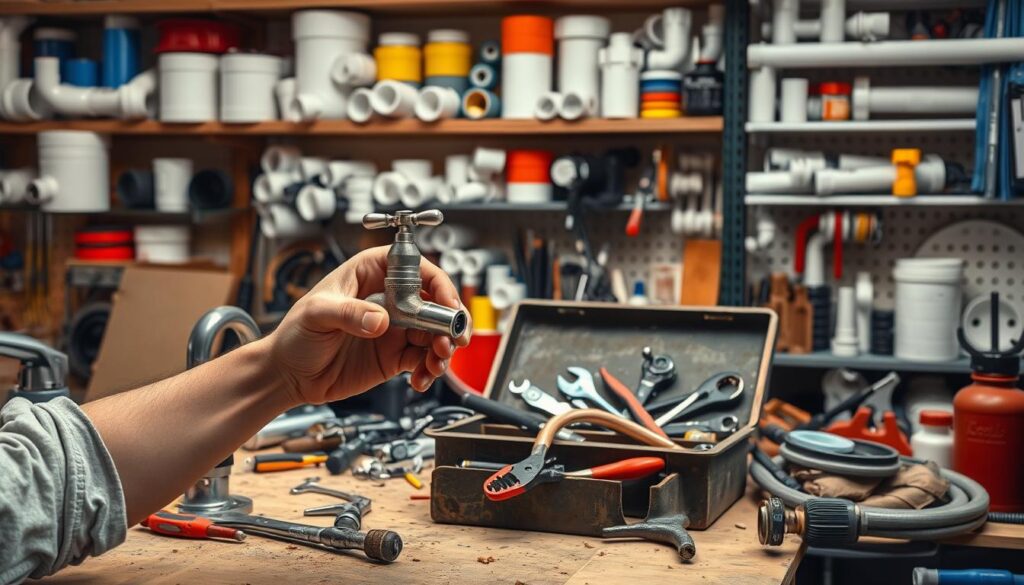
With the right tools and knowledge, homeowners can handle various plumbing repairs on their own. Many plumbing issues can be resolved with simple DIY techniques, saving homeowners money and the hassle of waiting for a professional plumber.
Replacing a Faucet: Step-by-Step Guide
Replacing a faucet can seem daunting, but it’s a manageable task with the right guidance. First, turn off the water supply to the faucet by locating the shut-off valves under the sink and turning them clockwise. Open the faucet to drain the water from the pipes. Use a basin wrench to loosen the old faucet’s mounting nuts, then lift the faucet out. To install the new faucet, follow the manufacturer’s instructions for mounting and connecting the water supply lines. For more complex faucet installations, consider consulting a professional or visiting trusted plumbing resources for guidance.
- Turn off the water supply
- Drain the pipes
- Loosen and remove the old faucet
- Install the new faucet according to the manufacturer’s instructions
How to Install a New Showerhead
Installing a new showerhead is a straightforward process that requires minimal tools. Start by removing the old showerhead by unscrewing it from the shower arm. If it’s stuck, use a wrench or pliers to loosen it. Clean the threads on the shower arm to remove any mineral deposits. Apply a small amount of plumber’s tape to the threads of the new showerhead to create a watertight seal. Screw the new showerhead onto the shower arm until it’s snug.
Tips for a successful installation:
- Use plumber’s tape for a watertight seal
- Clean the shower arm threads before installing the new showerhead
- Hand tighten the showerhead to avoid over-tightening
Simple Pipe Repairs: Patching and Sealing
Leaks in pipes can be frustrating, but patching and sealing them is a DIY task that can prevent further damage. For small leaks, use a pipe repair clamp or epoxy putty to seal the leak. For larger leaks or damaged pipes, you may need to replace the section of the pipe. Turn off the water supply before starting any repairs. Use a pipe cutter to cut out the damaged section, and then solder or glue the new section in place, following the manufacturer’s instructions.
By following these DIY plumbing repair guides, homeowners can tackle common plumbing issues with confidence. Remember, if you’re ever in doubt or the problem is beyond your skill level, it’s always best to consult a professional plumber to ensure the job is done correctly and safely.
When to Call a Professional Plumber
Recognizing the signs that indicate the need for professional plumbing assistance is vital for preventing further damage. While DIY plumbing repairs can be cost-effective, there are situations where hiring a professional is the best course of action.
Signs You Need Professional Assistance
There are several indicators that suggest it’s time to call a professional plumber. These include:
- Persistent leaks that won’t stop
- Low water pressure throughout the house
- Discolored water coming from the taps
- Unusual noises from the plumbing system
- Frequent clogs that DIY methods can’t clear
If you’re experiencing any of these issues, it’s advisable to seek help from a professional plumber. For emergency situations, services like emergency contractor services can provide immediate assistance.
Cost Considerations for Hiring a Plumber
Understanding the cost implications of hiring a plumber is crucial for budgeting. The cost can vary based on several factors, including the complexity of the job, the plumber’s experience, and the location.
| Service | Average Cost | Factors Affecting Cost |
|---|---|---|
| Emergency Call-Out | $100-$200 | Time of day, urgency |
| Hourly Rate | $75-$150 per hour | Plumber’s experience, location |
| Fixture Installation | $50-$500 | Type of fixture, complexity |
It’s essential to get a clear estimate before the work begins to avoid unexpected expenses. Always check if the plumber is licensed and insured to ensure you’re getting professional service.
Winterizing Your Plumbing System
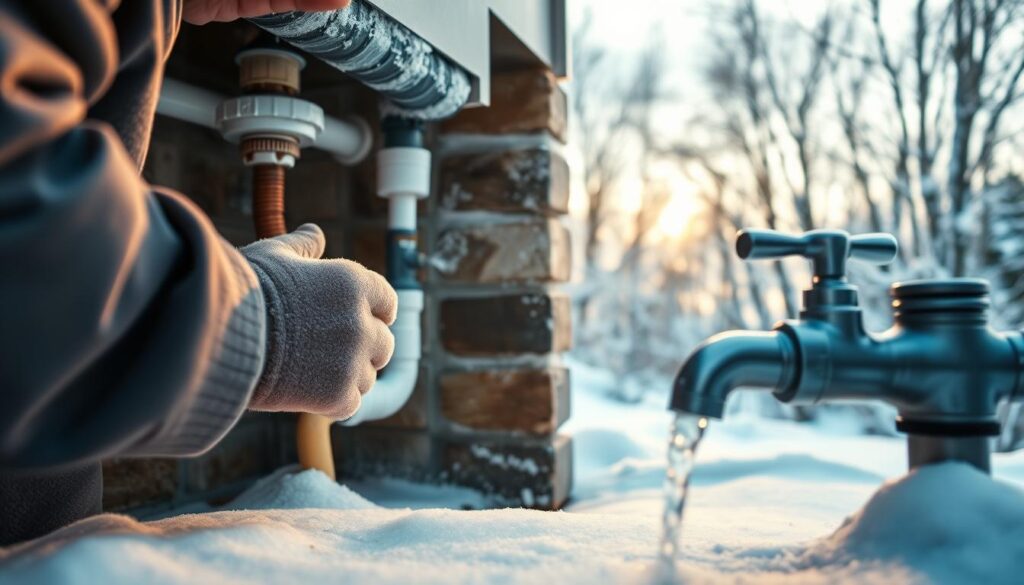
To safeguard your home against plumbing emergencies, winterizing your pipes is a must. As the temperature drops, the risk of frozen pipes and other plumbing issues increases. Proper preparation can save you from costly repairs and inconvenience.
How to Prepare Your Plumbing for Cold Weather
Preparing your plumbing for cold weather involves several key steps. First, insulate exposed pipes in unheated areas like the garage, basement, or crawlspace. Use foam pipe insulation or wrap pipes with heat tape or thermostatically controlled heat cables.
Disconnect and drain hoses from outdoor faucets to prevent freezing. Consider installing freeze-proof faucets or frost-proof spigots as an alternative.
Dealing with Frozen Pipes: Prevention and Solutions
Frozen pipes can lead to significant damage if not addressed promptly. Prevention is key, and understanding the signs of freezing can help you act quickly.
| Prevention Method | Description | Effectiveness |
|---|---|---|
| Pipe Insulation | Wrapping pipes with insulation to reduce heat loss | High |
| Heat Tape/Cables | Applying heat directly to pipes | Very High |
| Dripping Faucets | Allowing faucets to drip slightly to relieve pressure | Moderate |
If you do encounter frozen pipes, it’s crucial to act quickly. Open the nearest faucet to allow water to escape, and then apply heat to the frozen section using a hair dryer or towels soaked in hot water. Avoid using open flames, as they can cause damage or start a fire.
Understanding Plumbing Codes and Regulations
Understanding plumbing codes is vital to ensure compliance and safety in home renovations. Plumbing codes are designed to safeguard public health and safety by establishing standards for plumbing systems.
Importance of Compliance in Home Renovations
Compliance with plumbing codes is crucial during home renovations to avoid legal issues and ensure the safety of the household. Non-compliance can lead to fines, project delays, and even safety hazards. For more detailed information on plumbing codes and regulations, visit Master’s PG School.
Home renovations often involve changes to plumbing systems, which must adhere to local plumbing codes. Ensuring compliance not only enhances safety but also adds value to the property.
Common Local Plumbing Codes to Know
Local plumbing codes vary by jurisdiction, but some common elements include requirements for pipe sizing, venting, and water supply systems. Homeowners should familiarize themselves with these codes to ensure their renovation projects are compliant.
- Pipe material and sizing requirements
- Venting system specifications
- Water supply line standards
- Drainage and waste system regulations
It’s also beneficial to understand the role of a general contractor in ensuring compliance with plumbing codes. For insights into the responsibilities of a general contractor, refer to World Civil Society.
By understanding and adhering to plumbing codes and regulations, homeowners can ensure their renovation projects are both safe and compliant with local laws.
Eco-Friendly Plumbing Solutions
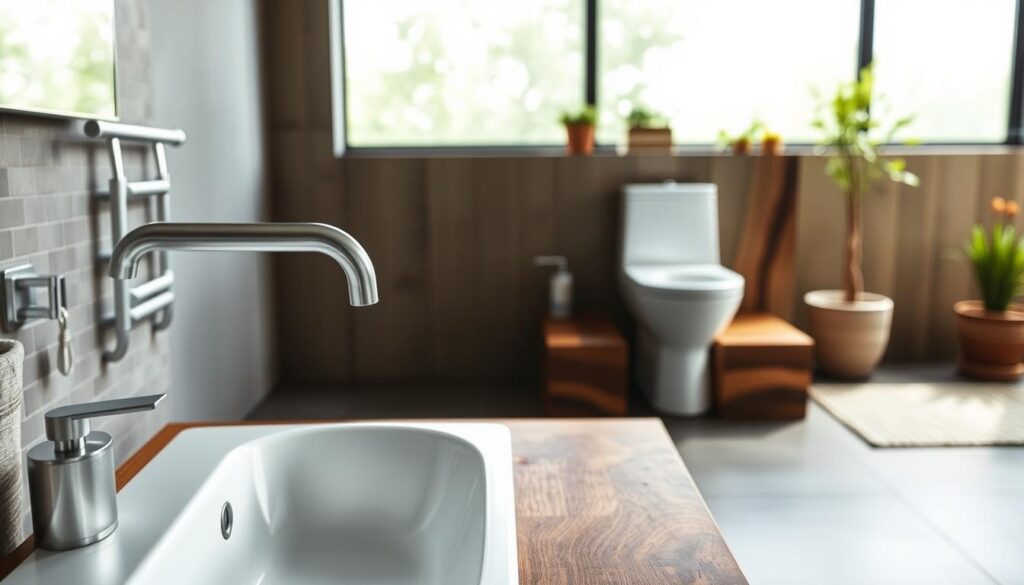
In today’s world, embracing eco-friendly plumbing practices is both a responsible and cost-effective choice. As homeowners become more environmentally conscious, the demand for sustainable plumbing solutions has seen a significant rise.
Eco-friendly plumbing involves adopting practices and installing fixtures that reduce water consumption and energy usage. One of the simplest ways to start is by implementing water conservation techniques in your daily routine.
Water Conservation Techniques for Homeowners
Water conservation is at the heart of eco-friendly plumbing. Simple changes can make a significant difference:
- Fixing leaks promptly to avoid wasting water
- Installing low-flow showerheads and faucets
- Using a full load when running the dishwasher
- Implementing rainwater harvesting systems for gardening
These techniques not only reduce your water bill but also contribute to the overall conservation of this precious resource.
Choosing Energy-Efficient Fixtures
Upgrading to energy-efficient plumbing fixtures is another crucial step. These fixtures are designed to use less water and energy without compromising performance:
- Look for fixtures with the WaterSense label, indicating they meet EPA standards for water efficiency.
- Consider tankless water heaters, which heat water on demand and can be more energy-efficient.
- Install dual-flush toilets to reduce water used for flushing.
By choosing energy-efficient fixtures, homeowners can significantly reduce their environmental impact while also lowering their utility bills.
In conclusion, adopting eco-friendly plumbing solutions is a practical and effective way to contribute to environmental sustainability. By implementing water conservation techniques and choosing energy-efficient fixtures, homeowners can make a positive impact on the environment while also enjoying cost savings.
The Importance of Regular Maintenance
Regular plumbing maintenance is crucial for preventing unexpected issues and prolonging the lifespan of your plumbing system. By staying on top of maintenance, homeowners can avoid costly repairs and ensure their plumbing system operates efficiently.
Creating a Plumbing Maintenance Schedule
To maintain your plumbing system effectively, it’s essential to create a maintenance schedule. This schedule should include regular checks on your plumbing fixtures, pipes, and appliances. For instance, checking for leaks under sinks and around toilets can help prevent water damage.
- Inspect visible pipes for signs of wear and tear.
- Check water pressure to ensure it’s within a safe range.
- Test your water heater to ensure it’s functioning properly.
Signs of Wear and Tear to Watch For
Being aware of the signs of wear and tear in your plumbing system can help you address issues before they become major problems. Some common signs include:
| Signs | Description | Action |
|---|---|---|
| Leaks | Water dripping from faucets or pipes. | Tighten loose connections or replace worn-out washers. |
| Discolored Water | Water coming out of faucets is rusty or dirty. | Check for sediment buildup in your water heater. |
| Low Water Pressure | Reduced water flow from faucets or showerheads. | Inspect for mineral buildup or blockages in pipes. |
For more complex plumbing issues or for professional assistance, consider reaching out to a reliable service provider like 24/7 Construction and Repair. They can offer expert solutions to keep your plumbing system in top condition.
How to Handle Plumbing Emergencies
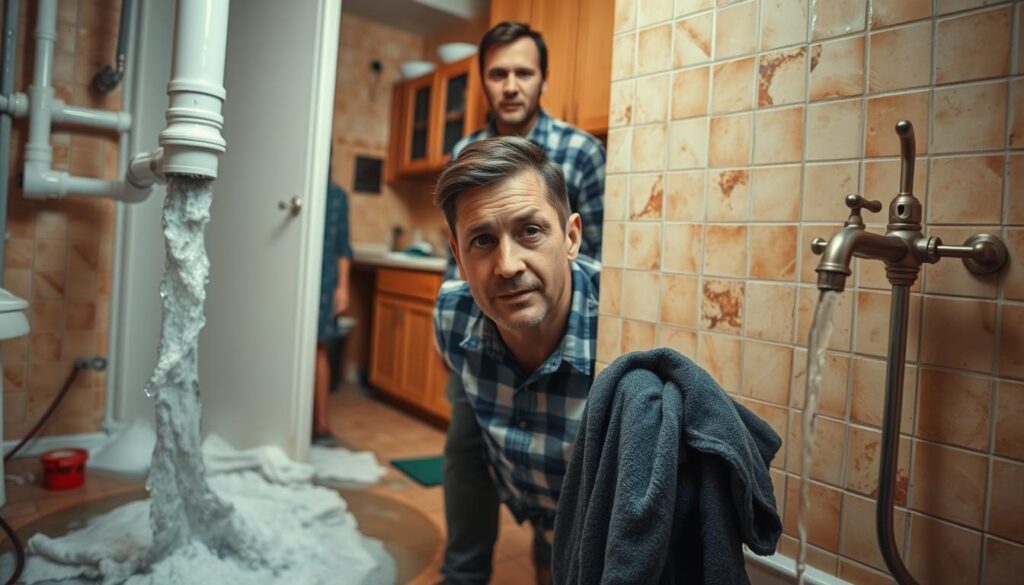
The key to managing plumbing emergencies lies in understanding the immediate actions to take. Plumbing emergencies, such as major leaks, can cause significant damage if not addressed promptly.
Immediate Actions for Major Leaks
When faced with a major leak, the first step is to shut off the main water supply to prevent further damage. Locate your home’s main water shut-off valve and turn it clockwise to shut off the water supply. For more information on handling plumbing emergencies with confidence, you can visit this resource.
Next, it’s crucial to evacuate the area to avoid any potential hazards, such as slipping on wet floors or being exposed to contaminated water. If the leak is significant, consider turning off the electricity to the affected area to prevent electrical shock.
“Acting quickly during a plumbing emergency can significantly reduce the risk of extensive damage to your home.” – Plumbing Expert
Essential Emergency Contact Information
Having the right emergency contact information readily available is vital. Make sure to have the phone numbers of local plumbers who offer emergency services. You can also consider saving the contact information of your local water utility company and a reliable plumbing service provider.
- Local emergency plumbing services
- Your water utility company’s emergency line
- A trusted plumbing professional for immediate assistance
By being prepared and knowing how to respond to plumbing emergencies, you can minimize potential damage and ensure your safety and the safety of your home.
Plumbing Myths Debunked
Debunking common plumbing myths is essential for homeowners to understand their plumbing systems better. Many myths can lead to poor maintenance practices, unnecessary expenses, and even safety hazards.
Common Misconceptions About Plumbing
One common misconception is that plumbing fixtures and pipes can withstand anything as long as they are installed correctly. However, regular wear and tear can lead to leaks and other issues if not addressed promptly.
Another myth is that chemical drain cleaners are safe and effective for clearing clogs. In reality, these chemicals can damage pipes and harm the environment.
| Myth | Reality |
|---|---|
| Chemical drain cleaners are safe. | They can damage pipes and harm the environment. |
| All plumbing issues require professional help. | Some issues, like leaky faucets, can be fixed DIY. |
| Low-flow fixtures are less effective. | Modern low-flow fixtures are designed to be efficient and effective. |
Truths Every Homeowner Should Know
Understanding the truth about plumbing can save homeowners money and reduce stress. For instance, knowing how to detect and fix leaks early can prevent water damage.
It’s also crucial to understand that not all plumbing issues require professional help. Simple tasks like replacing a faucet aerator or checking for leaks under sinks can be done by homeowners.
By debunking these common myths, homeowners can take a more informed approach to maintaining their plumbing systems, ensuring they are safe, efficient, and cost-effective.
Upgrading Your Plumbing Fixtures
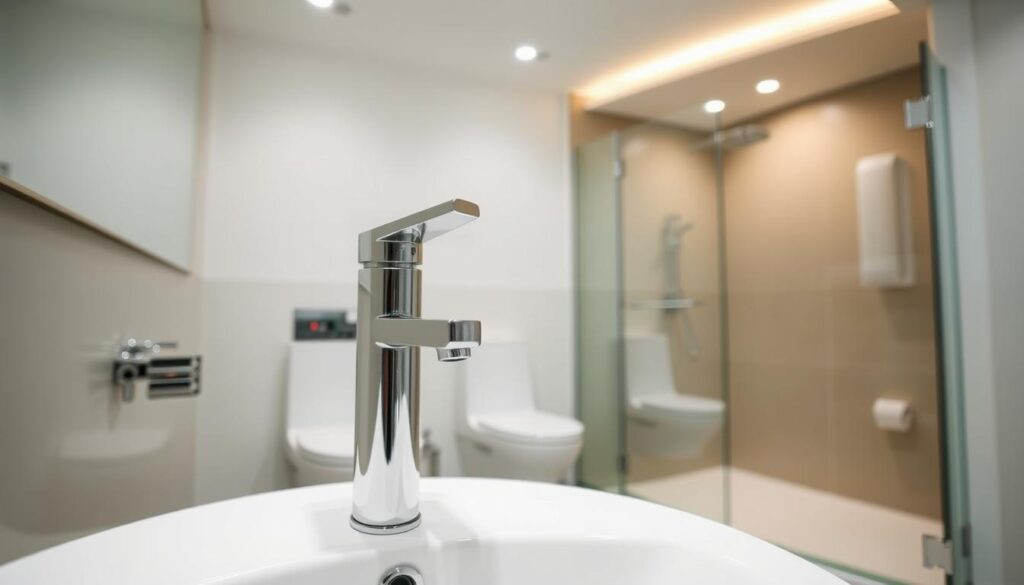
The benefits of upgrading your plumbing fixtures extend beyond mere aesthetics to include improved safety and efficiency. Modern plumbing fixtures are designed to conserve water, reduce utility bills, and enhance the overall functionality of your home.
Benefits of Modern Plumbing Fixtures
Upgrading to modern plumbing fixtures can have a significant impact on your home’s water consumption. According to the U.S. Environmental Protection Agency (EPA), installing water-efficient fixtures can reduce water usage by up to 20%. Modern fixtures are designed with water conservation in mind, using advanced technologies to minimize waste.
“Water-efficient plumbing fixtures are not just a trend; they’re a necessity for sustainable living,” says the EPA. This shift towards conservation is not only beneficial for the environment but also for homeowners looking to reduce their utility bills.
How to Choose the Right Fixtures for Your Home
When selecting new plumbing fixtures, several factors should be considered, including water efficiency, durability, and style. Here are some tips to guide your decision:
- Look for fixtures with the WaterSense label, indicating they meet EPA standards for water efficiency.
- Consider the material and construction of the fixture to ensure durability.
- Choose fixtures that complement your home’s style and décor.
By carefully selecting the right fixtures, homeowners can enjoy the benefits of modern plumbing while enhancing their home’s aesthetic appeal.
Connecting with Your Local Plumbing Community
Building a relationship with your local plumbing community can be incredibly beneficial for homeowners. By connecting with reliable plumbers and utilizing available resources, you can ensure your plumbing system remains in good condition.
Reliable Plumbers in Your Area
Finding trustworthy plumbers is crucial. Ask for referrals from friends, family, or neighbors who have had positive experiences. Online reviews and ratings can also help identify reliable professionals in your area.
Workshops and Classes for Homeowners
Many local hardware stores, community centers, and plumbing supply companies offer workshops and classes on plumbing basics, DIY repairs, and maintenance tips. These resources can empower homeowners to handle minor issues and understand when to call a professional.
By engaging with your local plumbing community, you can gain access to expert advice, reliable services, and valuable resources, ultimately saving time and money on plumbing-related issues.
